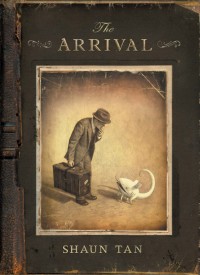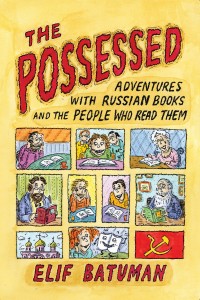Author Archives: Estelle Tang
A wordless tale of belonging: Shaun Tan’s The Arrival
Looking over much of my previous work as an illustrator and writer, such as The Rabbits (about colonisation), The Lost Thing (about a creature lost in a strange city) or The Red Tree (a girl wandering through shifting dreamscapes), I realise that I have a recurring interest in notions of ‘belonging’, particularly the finding or losing of it. (Shaun Tan, in an article written for Viewpoint magazine)
Shaun Tan’s The Arrival is a beautiful, immersive example of the internationally renowned illustrator’s narratives of belonging. There are no words in this book – just gorgeously rendered photorealist drawings that tell a migrant’s story in an unprecedented way.
The first images of the book usher you into a family’s life: a clock on a mantelpiece, a child’s drawing, a cracked teapot, a portrait of three people smiling. A father, a mother and a young daughter hold hands as they travel through streets heavy with the shadows of monsters; the man steps onto a train, headed for a new country. The Arrival looks like a photo album, but it is also a narrative, exploring a unique story with so much care that it can be universally understood.
Without language, we all find ourselves in a strange land. In The Arrival, there is little that is familiar to anchor us. Tan’s traveller arrives in a city that is half Ellis Island, half Oz: the writing that appears on signs and paperwork is elaborate and undecipherable; people are accompanied by alien creatures perching in baskets or on shoulders. It is unlike any place we have ever dreamed of, yet this man must now try to make it his home.
Slowly, he puzzles out the basics. How can he find work? He is fired from one job, and frightened from another, because he cannot read. What does food look like here? His crude sketch of a bread loaf elicits instead a curly gourd and a crustacean-like plant, but also an invitation to dinner from a man who, it turns out, also came from a dangerous homeland.
Tan’s illustrations resonate with empathy, rendering the many tragic stories here as keenly as he does the joyful ones. In The Arrival, his signature ability to make the strange tender has found another perfect story to tell.
Melbourne Writers Festival is delighted to present Shaun Tan’s The Arrival as a keynote event. Tan’s inventive graphic stories have already migrated from page to screen, with the Oscar-winning film The Lost Thing. Now, The Arrival has been brought to life in music by Sydney composer and musician Ben Walsh. An amazing live ‘sonic-scape’, performed by the multi-instrumental Orkestra of the Underground, accompanies projections of Tan’s exquisite illustrations. Tan will introduce this performance via video.
Shaun Tan’s The Arrival is at 7:30pm on 26 August at the Melbourne Recital Centre.
Tan also appears in conversation with Mike Shuttleworth on 3 September.
Thriller now: Berlin Syndrome and Before I Go to Sleep
A friend of mine is currently reading Melanie Joosten’s Berlin Syndrome, a fantastic psychological thriller about a young couple’s increasingly complicated relationship. When I asked him what he thought, he said it was a wonderful book, but its emotional impact was so great that he would have preferred to see it as a film: that way the pain would only last two hours, rather than the week it took him to read it.
For me, thrillers always bring to mind the ancient Greek concept of catharsis, the release of built-up emotions experienced by an audience at the conclusion of a play – more specifically, a tragedy – but they’d also experience relief: thank goodness their life was nowhere near as bad as that.
Thrillers do something similar; certainly, good ones build up an inexorable tension that begs to be let loose in a fitting yet unexpected conclusion. Because of this – or maybe I’m just a masochist – I much prefer thrillers in book form rather than as films. I love the absolute but safe immersion, the detail and the psychological depth we’re able to access through the written word. Berlin Syndrome, written in close third person, delves into the minds of the two young lovers, allowing us to see from two perspectives how something with the potential to become love turns into something much more sinister.
UK author SJ Watson’s Before I Go to Sleep also creates this immersion beautifully. Watson developed Before I Go to Sleep through the Faber Academy, from the seed of a news story about a man with epilepsy. ‘The bedroom is strange. Unfamiliar. I don’t know where I am, how I came to be here.’ So begins the story of Christine, which slowly takes in countless revelations, including the discovery that the middle-aged stranger she wakes up next to is her husband, and that as a result of head injuries she once suffered, she cannot retain memories; she wakes up every day as if she were young again.
Christine has been keeping a journal, though, a record of her new days. The entries from this journal become a retrieval of her identity that is as gripping and urgent as it is painfully incremental. The intimate first-person account is consuming: we know only what Christine knows, and hunger for more; and yet, it’s unreliable: as Christine uncovers more of her past, it becomes unclear whether she can trust even her own written memories.
As it happens, the film rights to Before I Go to Sleep have been bought by Ridley Scott – so if you prefer your pain in shorter doses, there’s some good news for you. But I’ll take the book, thanks.
I’ll be chatting with Melanie Joosten in Melbourne’s New Wave on 2 September, also featuring Jessica Au, Raphael Brous and SJ Finn.
SJ Watson appears in The Thrill of It with Felix J Palma and Jennifer Mills on 2 September, and in The Morning Read (free event) on 3 September, with Judith Zander, Eleanor Catton, Li Er, Hwang Tong Gyu and Christopher Kremmer.
The acrobatic intelligence of César Aira
Many well-read locals have unwittingly converged in their recent reading recommendations. The cynosure of their praise, César Aira, is a prolific author whose oeuvre is so extensive and popular at home in Argentina that Michael Greenberg, writing in the New York Review of Books, described it as having ‘engendered a mini-industry in Buenos Aires, involving start-up presses as well as more established publishers that share the job of putting Aira’s work between covers’. There are so many books that no one seems to be able to count them all (counts range from fifty to over eighty). As far as I can tell, though, only five of Aira’s books have been translated into English: Ghosts, The Literary Conference, The Seamstress and the Wind, How I Became a Nun and An Episode in the Life of a Landscape Painter.
Now, when the piper pipes, I follow. So now I have three of these slim volumes in my possession. I read Ghosts before I knew how Aira writes, that he slings his pen around after his thoughts without revising his work, making for an unbelievably unsettling and exhilarating reading experience. If television crime procedurals are at one end of the plot structure spectrum, with their revelations doled out in compact and predictable doses, Aira is continually repositioning the other end of the spectrum with his busy and elastic novels.
Ghosts opens on New Year’s Eve, amid a hot summer’s day of work. Slaving and joking, a group of construction workers are finishing up in order to celebrate freely that night. The night watchman, Raúl Viñas, lives on the top floor of the incomplete building with his family; his children play around the empty swimming pool and gaze out the unfinished walls. The eldest child, Patri, is quiet and dutiful, but entranced by the ghosts who roam the site. Sidestepping the breathlessness often associated with the magic realism of South America, Aira turns his attention to these spectres with the same curiosity and creative logic he applies to everything.
To describe the characters and the events of the novel is not to give a sense of why Aira’s work is so fascinating. Reading Aira is much like hearing a tale as a child, before the idea of story is familiar, both its wonders and its clichés. The formidable power a writer holds becomes salient in Aira’s literary wanderings: we’re held hostage to what Scott Bryan Wilson called Aira’s shifts of attention. Whether it’s the unwittingly comical length of a youth’s hair or a digression on architecture and its relationship to dreams, in Ghosts we reawaken to the radical nature of putting words to paper, and are grateful for the acrobatic intelligence of the scribe committing them there.
See Aira in conversation with his English-language translator, Australian Chris Andrews: in English, 4pm on 27 August; or in Spanish, 2:30pm 28 August.
Or celebrate 75 Years of New Directions, famed publisher of experimentalists Dylan Thomas, Ezra Pound and Cesar Aira. This event is free, but booking is required.
Melbourne Writers Festival program launches tomorrow
Yes, that’s right: the Melbourne Writers Festival program will be available in your copy of the Age tomorrow morning, or online at our website. You’ll be able to stop making your dream author wishlist and start compiling a real one.
The MWF team have been working tirelessly for months to put together a sublime 2011 program. Running for 11 days, the program boasts over 300 sessions and 400 guests, including some of the most exciting, most respected and most beloved writers the world has to offer.
If you feel like even a day is too long to wait, you can already check out our Schools Program online. Tickets for the 2011 Schools Program are already available; book in to see literary superstars ranging from acclaimed fiction writer Maile Meloy to local heroes Peter Goldsworthy and Steven Amsterdam taking residence in Federation Square haunts, ACMI cinemas, ArtPlay, the Wheeler Centre and the Immigration Museum.
We’re unbelievably excited – less than a month to go until our first events. You can expect some fabulous opportunities to eat with your favourite authors, discover literary Melbourne, and discuss the future of reading and writing. Whether you love fiction, journalism, poetry, graphic novels, crime, music … and more, or all the above, we think we’ve got you covered. And stay tuned for our Keynote Events: trust me, you’ll want to be there.
Spreading the word: Elif Batuman and Amazon reviews
One of my favourite guests from last year’s MWF, Elif Batuman, has an addictive blog, the kind that sends you spiralling into an array of new browser tabs and furious online book-ordering.
A post from a couple of months ago recorded the author’s discovery that while her book The Possessed has garnered a number of five-star ratings at Amazon, it has also earned a large number of one-star reviews. The Possessed has been received well by critics, and Batuman wondered why reader reviews were, on average, less positive, guessing
that satisfied readers of a well-reviewed book are less likely than unsatisfied readers to post on Amazon. One group thinks to itself, “Why should I write a good review when the Times already did,” while the other thinks, “Aha, a venue to express my outrage at the Times for hyping this book.” I found support for this hypothesis in the fact that many particularly well-reviewed books tended to have relatively low reader ratings. So… it’s the old dialectic of hype vs. backlash.
In response to this apparent reader proclivity, Batuman now writes five-star reviews on Amazon for books she loves. Thus far, she has lauded titles including Kazuo Ishiguro’s Nocturnes and A Fraction of the Whole by Steve Toltz, another 2010 MWF guest.
There were two things that interested me about this pro-good-book activism.
First, how much is a reader persuaded by reviews, whether print or online, by paid critic or passionate reader, to buy a book? I read criticism, in the broadsheets, in literary magazines and online, and blogs dedicated to reading, but it’s just one element in a complex algorithm, something like: [(number of times title positively covered in book press/blogs + recommendations from friends) – books bought this week] x (is it in stock at the shop + price ) / how much am I in the mood for the genre/author = likelihood of buying book. (Don’t judge my maths.)
I don’t usually buy books from Amazon, so I’m not sure how much store a reader might set by an Amazon review (though an Amazon review by Elif Batuman might be a different story to the review by XXmishOz89). And there are of course countless other places to find out if readers have liked a book, including blogs (looking forward to using this book blogs search engine, via Galleycat) and recommendation-based social networking sites like GoodReads, Shelfari and LibraryThing (which I have studiously avoided due to its name conjuring up the image of a Muppet-like monster who lurks behind the Dewey number 833.01–913 stacks).
Second, do people talk about books they love as much as books they don’t love? At my blog, I try to write something about every book I read (failing miserably these days), however much I enjoyed it. One reason I’ve slacked off so much is that I’m often loathe to add to a heap of praise – what else could I possibly say about this bestseller or that local darling?
Do you heed book reviews and reader comments when selecting something to read? And would you take to the internet to recommend beloved books to fellow readers, or are you more likely to explain why you disliked a disappointing one in an online forum?
Reading Melbourne
I’ve been home now for a few days. After spending some weeks prodigally gadding about with other cities, I’ve needed some help against my post-holiday blues. Don’t get me wrong: I’ve always lived in Melbourne, and it has my love for now and ever. But its welcoming embrace has been winter-chilly, its kissing cheek cold, and I have needed a bit of encouragement to fall back in love with it.
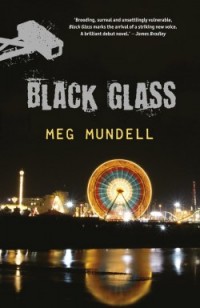 Luckily, Melbourne has no shortage of storytellers to assist with this reunion. In particular, there have recently been a few future-Melbourne books, extrapolating on existing geography and concerns to imagine a city strange and yet familiar. I recently had the pleasure of interviewing Meg Mundell, who was born in New Zealand but has lived in Melbourne for over a decade. Meg is the author of Black Glass, which envisions a near-future Melbourne (although AFL is still in evidence as the favourite sport, characters remember Cate Blanchett as an actress of yore).
Luckily, Melbourne has no shortage of storytellers to assist with this reunion. In particular, there have recently been a few future-Melbourne books, extrapolating on existing geography and concerns to imagine a city strange and yet familiar. I recently had the pleasure of interviewing Meg Mundell, who was born in New Zealand but has lived in Melbourne for over a decade. Meg is the author of Black Glass, which envisions a near-future Melbourne (although AFL is still in evidence as the favourite sport, characters remember Cate Blanchett as an actress of yore).
I read Black Glass a few months ago, but it popped up in my head again and again on my travels. A common topic in travellers’ conversations is politics; I did some patient explaining about the 2010 leadership spill to New Yorkers in dive bars, and I saw the church in Iceland that Italian Prime Minister Silvio Berlusconi disliked enough to suggest it should be bulldozed. Among all this talk of politicians, I couldn’t help but recall the government that Meg predicts for us in her novel. People who don’t have identity documentation, including children like Black Glass protagonists Tally and Grace, are unable to work legally, so they are forced into dangerous work on society’s fringes.
Not only is the government inhumanely blind to these people, but it also operates much like a corporation with a lot to lose. One character, Luella, a government official, trades newsworthy tidbits for control over how new policies will be represented by her reporter allies. When I asked Meg what Luella’s government wanted, she said: ‘To be re-elected’. This comment brought to mind not something from our possible future, but something fixed in our history: last year’s national election, in which Labor’s pre-election performance was criticised for its hollow tactics. But it’s not all doom and gloom in Black Glass. Lost as they are, Tally and Grace meet some people who help them along the way.
And it’s this idea of support and friendship for marginalised — indeed, homeless — people that first sparked the idea for Glenda 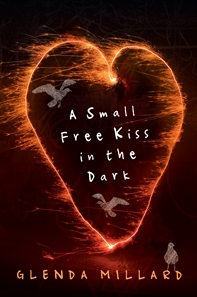 Millard’s A Small Free Kiss in the Dark, a young adult book that has been shortlisted for and won many awards. Young Skip runs away from school only to find himself in a city suddenly besieged by war. He befriends a homeless man named Billy, and an even younger boy called Max. Together they help each other to survive the onset of planes, soldiers and isolation.
Millard’s A Small Free Kiss in the Dark, a young adult book that has been shortlisted for and won many awards. Young Skip runs away from school only to find himself in a city suddenly besieged by war. He befriends a homeless man named Billy, and an even younger boy called Max. Together they help each other to survive the onset of planes, soldiers and isolation.
Though A Small Free Kiss in the Dark is set in a city that is never named, it contains hints that a Melburnian would easily take. I was moved by the little band’s pursuit of refuge through underground train passages, in a state library and in a fun fair that I had no trouble imagining as an abandoned Luna Park.
In non-fiction Melbourne reads, I’m looking forward to Sophie Cunningham’s Melbourne, due out in August.
What are your favourite Melbourne books?
Greetings (and stomach rumblings) from New York
Greetings again from New York. I’ve conquered the jet lag, and lightened up my pockets considerably – basically, I’m feeling good about the whole thing.
Before I left, I did a lot of reading about this town: it’s easy to fill your time here, obviously, but I didn’t want to come home and realise I’d missed out on something just because I’d never heard of it. Enter TASCHEN’s New York. Unlike many people, I find it hard to get truly energised about a new place until I’m actually there. But TASCHEN’s New York forged new synaptic paths in my brain with its vivid matte 238 x 302 mm pages.
 Divided into three sections – Hotels, Restaurants and Shops – it built my travel lust unbearably. It’s eye candy, sure, but it’s also a useful travel guide (though, at its size, not practical to be lugging around). On my budget, I was never going to be staying at Le Parker Meridien, but the picture of an attainable oil-stained paper bag of French fries from its diner, The Burger Joint, had me almost weeping with anticipation.
Divided into three sections – Hotels, Restaurants and Shops – it built my travel lust unbearably. It’s eye candy, sure, but it’s also a useful travel guide (though, at its size, not practical to be lugging around). On my budget, I was never going to be staying at Le Parker Meridien, but the picture of an attainable oil-stained paper bag of French fries from its diner, The Burger Joint, had me almost weeping with anticipation.
Images are the hero of TASCHEN’s New York. I’ve now been to storied department store Bergdorf Goodman and classic deli Murray’s Cheese, but the TASCHEN’s New York pictures were as good a primer as I could have hoped for. Copy is kept to a minimum, but it’s still informative, offering interesting tidbits about architecture and proprietor provenance.
One of the main strands of this trip was always going to be food. There has been no grace or dignity to the way I have been soliciting food cart recommendations from friends and feverishly haunting the New York Magazine restaurant guide. My inbox is chock-full of deli recommendations, and I’ve made a Google Map solely dedicated to eateries.
This single-minded research has been fun, but it’s done me no favours, really. Individual recommendations are great, but they come from so many sources, with very little overlap, that it’s hard to figure out the relative value of each. And restaurant reviews in New York media are famously make-or-break, often leaving a reader with few options but to accept the review as gospel.
A blessed ingredient in this mire of food fetishism is Shannon Bennett’s New York: A Personal Guide to the City’s Best, a follow-up  to his Paris guide for the ‘diner-traveller-reader’. Bennett, whose restaurant Vue de Monde is considered a Melbourne fine dining pinnacle, on his own would make this book a credible New York companion: he once worked in the Big Apple, calling it ‘the most exciting food city outside of Paris’, but he also visits often. While he’s famed for his refined cuisine, this book covers not just haute cuisine but also bistros, bars, hotels, ice-cream shops and where to find great hot dogs (I’ll let you know how the $25 Crif Dog with a julienne of truffles goes.)
to his Paris guide for the ‘diner-traveller-reader’. Bennett, whose restaurant Vue de Monde is considered a Melbourne fine dining pinnacle, on his own would make this book a credible New York companion: he once worked in the Big Apple, calling it ‘the most exciting food city outside of Paris’, but he also visits often. While he’s famed for his refined cuisine, this book covers not just haute cuisine but also bistros, bars, hotels, ice-cream shops and where to find great hot dogs (I’ll let you know how the $25 Crif Dog with a julienne of truffles goes.)
Also making this book a valuable resource is that Bennett’s opinions – knowledgeable, generous but no-nonsense – are supplemented by those of about thirty high-profile contributors including chefs Neil Perry and Luke Mangan, New York locals, and friends like film director Fred Schepisi, whose comments here are delightfully laconic (‘Great after the theatre.’) Bennett’s co-author Scott Murray in particular delivers some useful and potentially game-changing zingers: ‘A strongly deep-fried taste in a three-star restaurant?’
Speaking of deep-fried … I think I’m going to have to get lunch right now.
Belated reading and delayed writing: Child 44 and Game of Thrones
Hello again. It’s been a while, hasn’t it? But here we are again, this time pacing the boards in anticipation of MWF 2011. I’m very happy to be back here with Simon Keck and new MWF bloggers Jo Case and Stephanie Honor Convery; we’ll have an excellent time of it, I’m sure.
In the interim, I’ve been dividing my time between Oxford University Press, where I’m an editor; Kill Your Darlings, where I’m the Online Editor; writing about books here and there; and my online equivalent of a childhood house in the suburbs, 3000 BOOKS, where I try (with decreasing success) to record something about every book I read.
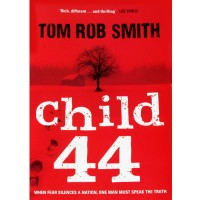 I have less and less time to stick to the project these days, but it’s a good little system. On the one hand, while my untidy mind is likely to forget the details of a novel just read, or even a short story twice read, the internet never forgets. (Just try googling “Billy Joel demo tape”.) But on the other hand – and the other hand never has anything nice up its sleeve – it’s mortifying to realise how slowly I get through books, and to books. For example, only this year did I read Tom Rob Smith’s 2008 Booker-longlisted Child 44 (Smith was a MWF guest in 2009). The third book in his Cold War-era thriller series about secret police member Leo Demidov is coming out next month in the UK. So, while Smith has managed to write two follow-up books in the intervening years, I’ve only managed to read one of them. Luckily someone has their priorities straight.
I have less and less time to stick to the project these days, but it’s a good little system. On the one hand, while my untidy mind is likely to forget the details of a novel just read, or even a short story twice read, the internet never forgets. (Just try googling “Billy Joel demo tape”.) But on the other hand – and the other hand never has anything nice up its sleeve – it’s mortifying to realise how slowly I get through books, and to books. For example, only this year did I read Tom Rob Smith’s 2008 Booker-longlisted Child 44 (Smith was a MWF guest in 2009). The third book in his Cold War-era thriller series about secret police member Leo Demidov is coming out next month in the UK. So, while Smith has managed to write two follow-up books in the intervening years, I’ve only managed to read one of them. Luckily someone has their priorities straight.
Speaking of follow-up books, I was recently intrigued by Laura Miller’s piece in the New Yorker about George R. R. Martin, author of the medieval politics-meets-fantasy series A Song of Ice and Fire. Titled ‘Just Write It!’, Miller’s piece describes several groups in Martin’s large and passionate fanbase, one faction of which has taken against the author for not yet having delivered the fifth book in the series (Martin predicts that there will eventually be seven books in total). The fourth book, A Feast for Crows, was published in 2005.
That’s a pretty long wait. But of course, like a fool, I thought it would be a great idea to start reading the series regardless. 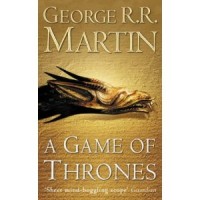 I’m now halfway through the second book, but I have no idea why I would torture myself with the prospect of a perpetual cliffhanger, particularly in a series noted for its complexity and non-traditional reward–morality ratio. (Martin has said that the fifth book will be published in July this year, and a television series based on the books may provide some relief should the book not materialise.) Even more a fool, I want to finish the book (a mere dash at 744 pages) before I hop on a plane for New York this Thursday.
I’m now halfway through the second book, but I have no idea why I would torture myself with the prospect of a perpetual cliffhanger, particularly in a series noted for its complexity and non-traditional reward–morality ratio. (Martin has said that the fifth book will be published in July this year, and a television series based on the books may provide some relief should the book not materialise.) Even more a fool, I want to finish the book (a mere dash at 744 pages) before I hop on a plane for New York this Thursday.
Anyhow, we’ll see how that goes. I’ll also be planning my holiday reading this week. I’m going to New York and Iceland, and am planning my book stash accordingly. More on that soon.
